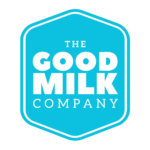Beyond Feed: A Cow’s Diet Can Change Your Milk — and Your Health
In a world overrun by processed food and industrial agriculture, it’s easy to forget that the quality of what we consume begins long before the kitchen — it begins on the farm. And when it comes to milk, the health of the cow and her diet directly influence the milk’s nutritional integrity.
At The Good Milk Company, in the foothills of the Shivalik range, we do things differently. Our indigenous Belahi cows, native to Uttarakhand, graze freely in Himalayan forest lands, consuming a diverse array of herbs and native flora — just as nature intended.
That’s why our Belahi cows roam freely through the Shivalik forests, grazing on native shrubs, grasses, and over 50 varieties of wild herbs.
The Diet of Forest-Grazing Belahi Cows
1. Giloy (Tinospora cordifolia)
Known as a powerful immunomodulator in Ayurveda, giloy is rich in alkaloids and antioxidants, supporting immune response, liver function, and reducing oxidative stress. When consumed by cows, its bioactive compounds are believed to enhance immune-supportive properties in the milk.
2. Brahmi (Bacopa monnieri)
Traditionally known for enhancing cognitive function, Brahmi contains bacosides, which have neuroprotective and antioxidant effects. Grazing cows ingest trace amounts of these beneficial compounds, which are often passed into their milk in minute but functional doses.
3. Shatavari (Asparagus racemosus)
Widely used to support female reproductive health and digestion, Shatavari is a natural adaptogen that helps balance hormones and support the gut-brain axis. Milk from cows grazing on Shatavari-rich lands may carry enhanced levels of beneficial fatty acids and natural enzymes.
4. Wild Lemongrass, Bichhoo Ghaas (Urtica dioica), Chirata (Swertia chirata), and Nagarmotha (Cyperus rotundus)
These native herbs are known for their anti-inflammatory, antimicrobial, and detoxifying properties and are part of the natural biodiversity in Himalayan forest pastures.
How This Impacts Milk Quality
This herbal-rich, natural diet gives our Belahi cows’ milk a distinct edge in nutritional value:
- Higher in conjugated linoleic acid (CLA): Linked with improved metabolism, fat regulation, and reduced cancer risk.
- Naturally rich in butyric acid: A short-chain fatty acid known for gut lining repair, anti-inflammatory benefits, and brain-gut support.
- Enriched with micronutrients: Zinc, selenium, Vitamin A (retinol), and natural enzymes—thanks to the bioavailability from wild herb intake.
- A2 beta-casein protein: Easier to digest than A1, may reduce gastrointestinal discomfort and lower inflammation markers.
This is functional milk — not just food, but nourishment with therapeutic potential.
What Our Cows Don’t Eat
- No processed grain feeds
- No GMOs, pesticides, or synthetic fortification
- No hormone injections or antibiotic-laced supplements
- No chemical silage or plastic-contaminated storage
Commercial dairies often rely on high-calorie grain-based feed, urea-mixed cakes, and chemical additives to maximize yield. While this may increase quantity, it dilutes milk quality, introduces harmful residues, and disrupts cow health.
From Biodiversity to Bioavailability
One of the key advantages of our grazing system is diverse forage → diverse gut microbiota in cows → richer, more bioavailable milk.
Studies show that free-grazing cows have more robust microbiomes, which not only improve their own health but enhance the nutritional spectrum of their milk.
In contrast, confined cows on monoculture diets develop narrower gut diversity, reducing immune strength and increasing dependence on antibiotics — residues of which can be found in conventional milk.
Belahi Cows: The Native Advantage
The Belahi cow is a desi, hill-adapted breed native to Uttarakhand — resilient, gentle, and perfectly suited to free-range grazing in the Himalayan ecosystem. Unlike high-yield foreign breeds like Holstein Friesians or Jerseys, Belahi cows:
- Naturally produce A2-type milk.
- Are disease-resistant, requiring fewer interventions.
- Thrive on wild forage, reducing the need for costly or artificial feed.
- Have stronger mother-calf bonds, supporting ethical, non-stressful milking.
Supporting Belahi cows is not just good for your health — it’s a commitment to local biodiversity, regenerative farming, and ecological balance.
Nature Knows Best — And So Do Our Cows
Our approach is simple: let cows be cows. Let them roam, graze, choose their food from nature’s pharmacy — and in return, they provide milk that’s rich, clean, and naturally healing.
When cows eat the way they were meant to, the milk they give becomes a bridge between earth and body, tradition and nutrition.
Let Your Milk Be As Wild As Your Spirit
In every liter of our forest-fresh A2 milk, you’re drinking:
- The wisdom of Ayurveda
- The richness of Himalayan soil
- The purity of ethical practices
- And the wild energy of grazing Belahi cows
Ditch the processed. Embrace the natural. Your family deserves better milk — and now, it’s within reach.
